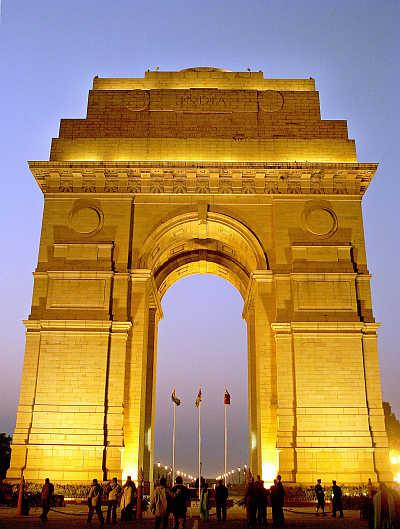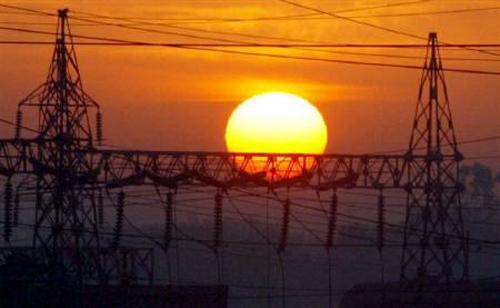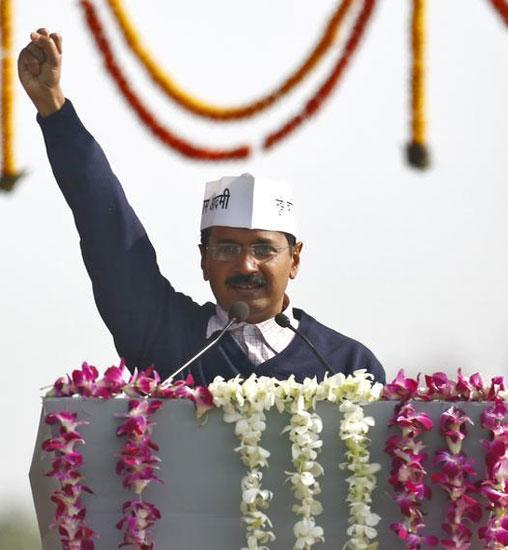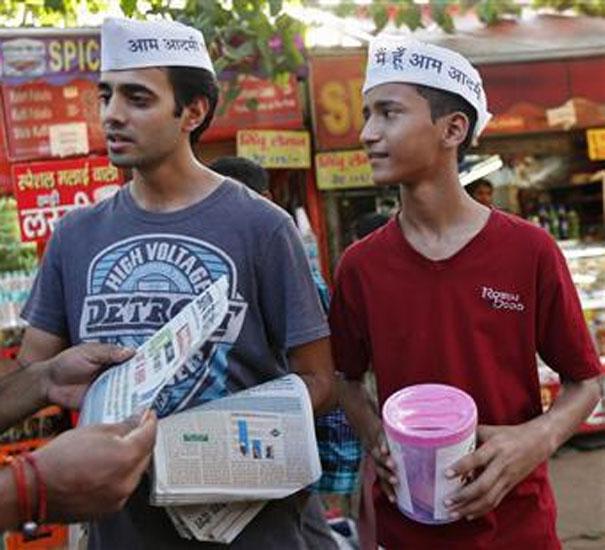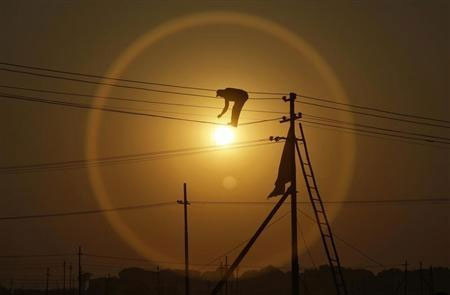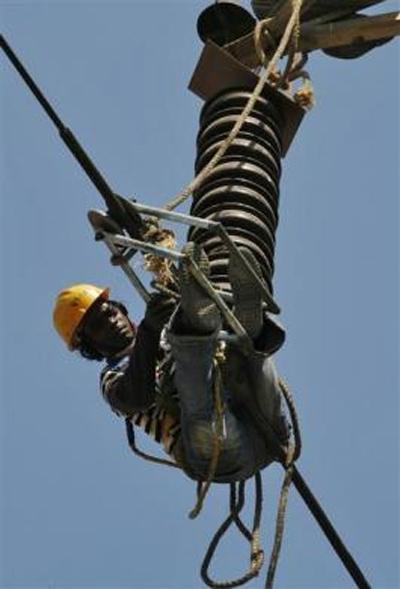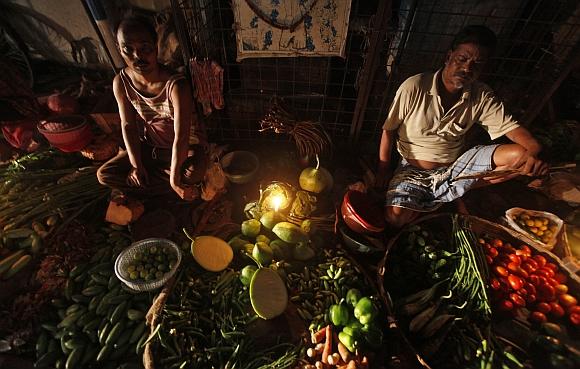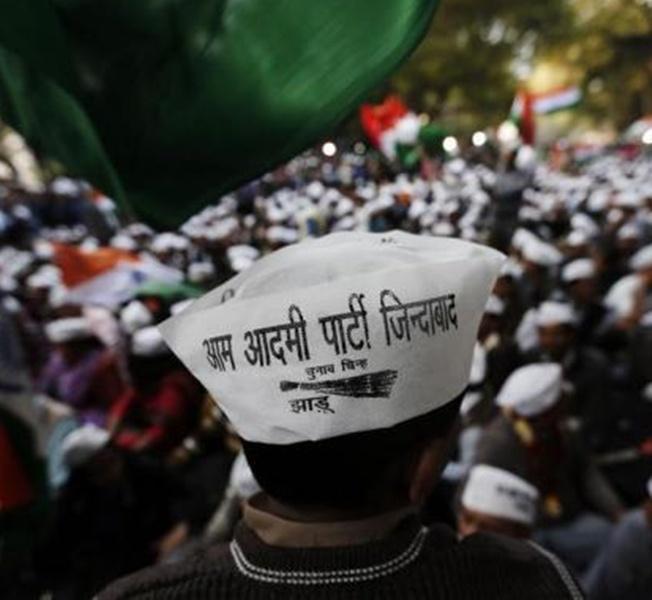 | « Back to article | Print this article |
Kejriwal's move, a blow to the crisis-hit power industry
After Delhi's move to slash its electricity tariff by half, other states are calling for similar concessions, dimming the prospects for electricity reforms.
Chief Minister Arvind Kejriwal's decision to cut tariffs by half (through a subsidy) may have made Delhi power the cheapest in the country, but it threatens to undo all recent reforms in tariff rationalisation across the country.
Taking a cue from Delhi, consumers across the nation are raising similar demands. Be it Mumbai, Punjab, Chhattisgarh, Haryana or Bihar, calls for tariff cuts are becoming louder.
Delhi may have the money to subsidise power; the problem is that many other states do not have the financial wherewithal to follow. The burden then will have to be borne by the power utilities.
Click NEXT to read more...
Kejriwal's move, a blow to the crisis-hit power industry
Not surprisingly, Kejriwal's move (not unanticipated because it was a poll promise) is attracting severe criticism from experts who are calling it regressive, populist and "against the spirit of electricity law".
Low power tariffs, combined with free or heavily-subsidised power for the farm sector and rampant theft, had wreaked havoc with the distribution companies, or discoms, of most states.
Their combined losses peaked at Rs 240,000 crore in March 2012. This threatened the entire sector as producers were worried about how the discoms would find the money to pay for the power they bought.
Electoral politics had brought the power industry to its knees. Several experts had pointed to the urgent need to raise tariffs, reducing the subsidy for the farm sector and plugging the theft and transmission losses.
Click NEXT to read more...
Kejriwal's move, a blow to the crisis-hit power industry
On a tariff-raising spree
Kejriwal's populist move comes on the heels of a series of much-needed tariff increases across states. Last financial year, 23 states raised tariffs ranging from 5 per cent to as high as 32 per cent.
Even in the current year, over eight states have already raised power tariffs. As it is, the increases this year were moderate due to elections in five states and the upcoming general elections, but Kejriwal's announcement has further dampened the enthusiasm for reform.
Also, the rising wave of political opinion in favour of tariff reduction may spoil the benefits from the Centre's financial restructuring package for discoms which mandates yearly tariff increases rather than cuts.
The power sector is governed by the provisions of the Electricity Act of 2003 and the National Tariff Policy of 2006. Both prescribe that states should adopt tariff rationalisation in order to keep the discoms in good health.
Clause 8.3 of the National Tariff Policy unambiguously states that tariffs for all consumers should be within 20 per cent of the average cost of supply and rates should generally reflect the cost of the service.
Click NEXT to read more...
Kejriwal's move, a blow to the crisis-hit power industry
How would Kejriwal's subsidy impact this reform prescription? In Delhi, the current cost of supply stands at Rs 7.39 per unit. According to the 20 per cent prescription, discoms should be allowed a minimum average tariff of Rs 5.92 per unit.
In the lowest consumption slab of up to 400 units per month, discoms are allowed to charge Rs 3.7 per unit from consumers. However, after Kejriwal's subsidy move, these consumers will pay only Rs 1.9 per unit of power that costs the discoms Rs 7.39 per unit.
Delhi is not the only region with a yawning gap between the cost of supply and the average revenue realised. With input costs rising on the back of higher fuel charges and revenues coming under pressure due to stagnant tariffs, the cumulative gap for all discoms shot up from 76 paisa a unit in 1998-99 to Rs 1.45 in 2009-10.
Click NEXT to read more...
Kejriwal's move, a blow to the crisis-hit power industry
The combined debt of all discoms reached Rs 190,000 crore (Rs 1,900 billion) in March 2012 as more and more of them opted for loans to meet operational costs - leading to the financial restructuring plan.
Under the scheme, the government is taking over one half of the short-term liabilities of discoms, while the other half is being restructured by the lenders. The condition, however, is that the discoms will revise tariffs so that their finances do not plunge into the red again.
The scheme has been a hit since its inception in September 2012: at least eight major defaulting states have started restructuring the liabilities of their discoms with the promise to revise tariffs.
Click NEXT to read more...
Kejriwal's move, a blow to the crisis-hit power industry
Now, Kejriwal's move is threatening to unravel the entire exercise. Most states are worried there could be dire political consequences if they raise power tariffs now.
The subsidy is also at odds with the recommendations of the Thirteenth Finance Commission (2010-15). The commission had stated that the states need to address the problem of losses in the power sector in a time-bound manner as the sector is beset with irrational tariffs in most states.
"Subsidy for the power sector is the largest component of state government subsidies," the commission had noted in its 2009 report. Also, according to another report on power utilities authorised by the commission, the guarantees extended on loans raised by the power sector constituted 36 per cent of the total guarantees extended by state governments in 2007-08.
Click NEXT to read more...
Kejriwal's move, a blow to the crisis-hit power industry
Mismatched costs
A Planning Commission report on the power sector for the Twelfth Five-year Plan (2012 -17) also says that the existing tariff is not appropriate to meet the cost of supply.
"This hinders the sustainability of distribution companies. State governments may have to examine the possibility of increasing the tariff in respect of agriculture and domestic sector or providing adequate revenue subsidy."
In another report, the Planning Commission has noted that power subsidies stand at a high of 22 per cent of sales revenue of discoms in Delhi, which is often seen as a success story of distribution reforms through privatisation. Kejriwal's increased subsidy announcement would raise the figure. That calculation, however, is yet to be done. The figure stands at 28 per cent at the national level.
No wonder, experts do not mince words while pointing out flaws in the Delhi government's subsidy experiment. "Any move to cut retail tariffs at a time when the distribution utilities across the country are suffering from financial stress can only be called regressive. Instead, what is needed is a more targeted approach to subsidy to see that only those who truly need subsidy get it," KPMG Advisory Services Partner Santosh Kamath says.
Click NEXT to read more...
Kejriwal's move, a blow to the crisis-hit power industry
He highlights the significance of tariff increases across the country in the past two years for the sector's reform. The distribution sector has been making annual losses of nearly Rs 70,000 crore nationally.
"Also, the threshold of 400 units a month for subsidy is very high as this would encompass high-income households as well. Typically, subsidies are restricted to those consuming 30 units or 50 units a month and are meant to cover the lifeline level of consumption. Instead of large-scale subsidy programmes, governments should focus on areas like energy efficiency to help consumers reduce their cost of energy," Kamath adds.
Experts also assert that heavy and poorly-targeted subsidies work at cross purposes to the larger public interest as they divert government finances from more socially-desirable programmes.
Huge power subsidies also lead to sub-optimal use of energy since the incentive to adopt energy efficiency measures gets reduced. Kejriwal has set the power sector back by at least a couple of years.
